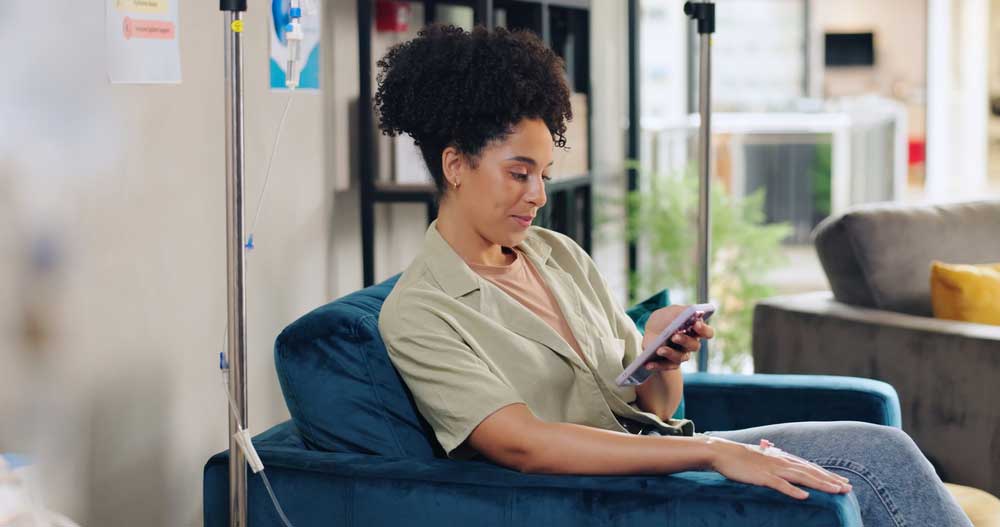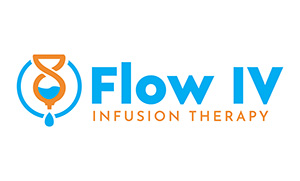
In an era of wrist watches with built-in electrocardiograms and AI-powered diagnostic tools, it’s about time that health and wellness treatments like IV infusion therapy experienced a similar evolutionary leap.
And sure enough, as the post-pandemic world wakes up to a “pro-remote” paradigm shift affecting many major industries, IV infusion therapy has seen a move towards quick and convenient home-based treatments.
That’s right, you can now receive that much-needed IV drip in the comfort of your home with the help of mobile IV services. But what exactly does this entail, how does it work, and how does it differ from in-clinic services? Read on for a simple, yet comprehensive breakdown of the “Uberfication” of your favorite wellness treatment.
How Mobile IV Therapy Works
First and foremost, if you’re unacquainted with IV infusion therapy in general, this is the practice of infusing a potent cocktail of nutrients directly into the bloodstream with the use of an intravenous line. For many decades, both in wellness and more urgent applications (e.g., severe dehydration, stroke, etc.), IV administration has been relied upon for its speed and potency.
Substances administered intravenously are taken directly to the bloodstream, meaning they absorb at a much higher rate and begin acting much sooner than orally ingested substances that first pass through the digestive system.
Where simpler IV solutions are used mostly for rehydration purposes, our various mobile IV concoctions demonstrate the power of this treatment to address a wider range of needs and concerns. For example, our Nature’s Defense formulation equips the immune system to fight off illness, and Hair of the Dog is your best friend when fighting a hangover.
A typical mobile IV treatment follows the same basic blueprint as our in-clinic services, with the main difference being that we come to you. As soon as you are prepped and comfortable, the IV catheter is inserted into the vein (typically in the arm), after which your chosen solution is administered for the next 30-60 minutes or so. All you have to do is stay put, relax, and wait for the treatment to run its course.
When, Why, and How to Go With Mobile IV Therapy
In the same way you don’t need some ironclad excuse to justify ordering your favorite meal to your home, let us top our list of reasons to choose mobile IV therapy with “because I wanna.”
In all seriousness, the convenience of at-home services is a wellness intervention in itself for those looking to incorporate stress management into their routine. Skip the drive, skip the waiting, and carry on with your day immediately after treatment.
Mobile IV therapy is also a lifesaver for the jet-lagged traveler looking to get a boost before the big convention or important meeting. Especially if it’s your first time in the area, finding and paying for transportation, gauging traffic time, and other logistical concerns can make the difference between staying semi-comatose in your hotel room or getting the treatment you need. Thankfully, we’ve got option C ready for you with mobile IV services. And yes, mobile IV therapy services are available for the home, office, or a hotel.
Whether you’re too hungover to drive, too busy with young kids to easily leave the house, dealing with unexpected car trouble, or whatever else, you shouldn’t have to pay the additional penalty of losing access to treatments that keep you feeling and performing your best.
Drips vs Pushes: What’s the Difference?
You may have noticed that we offer both mobile IV drips and mobile IV pushes. The main difference between these two treatments is two-fold: speed and hydration level.
As the name implies, a mobile IV drip involves the steady administration of fluid over a longer period of time. Gravity alone is what causes the medication to steadily drip through the line and into your system. In most cases, we can administer an IV drip treatment in a little less than an hour.
On the other hand, an IV push utilizes a much more rapid delivery system to deliver the same amount of nutrients in a fraction of the time. Instead of waiting for the bag to drip all of its contents out, we use a syringe to directly inject the entire solution into your IV line. Hence, the entire treatment can be applied in just a few minutes.
As for the hydration factor, IV pushes are often chosen over drips when the patient is on a fluid intake restriction. This is because the IV push requires a lower overall volume of fluid to deliver its “shot” of nutrients and/or medications.
Wellness Uberfied: Start a Thing With Us
Whatever the treatment, modern advances done the right way should take away from your plate, not add to it. It’s with this philosophy that our team at Flow IV Infusion Therapy created a full suite of mobile IV therapy concoctions, including Myers’ Cocktail, the skin-boosting Glow drip, Tummy Bug drips, and several more. We also offer custom IV drips for those looking for a finely tuned approach to meeting their needs.
As long as it is done while adhering to the highest standards of safety and efficacy, we’re firm believers in bringing top-quality care directly to our patients. Whether you just don’t feel like driving or if you are actually unable to come to us, check out our mobile IV services and get the boost you’ve been looking for within the comfort of your own home, or wherever you are.
Share:
More Posts

5 Surprising Things IV Therapy Can Help With
As much as we stand by the very real, evidence-based merits of IV infusion therapy, there’s no denying the fact that this wellness practice has

What Your Favorite IV Cocktail Says About You
In the same way that a person’s choice of “not-IV cocktail” can offer a window into their reserved, buoyant, or even zany personality (that’s the

Peptides vs. Hormones: What’s the Difference?
Peptides vs. Hormones: What’s the Difference? When it comes to optimizing your health, energy, and performance, the terms “peptides” and “hormones” often come up, but

Can Peptide Therapy Help With Mood and Stress?
If you’ve been feeling emotionally drained, stressed, or just off, you’re not alone. Mood swings, burnout, and lingering anxiety are common issues for adults juggling

